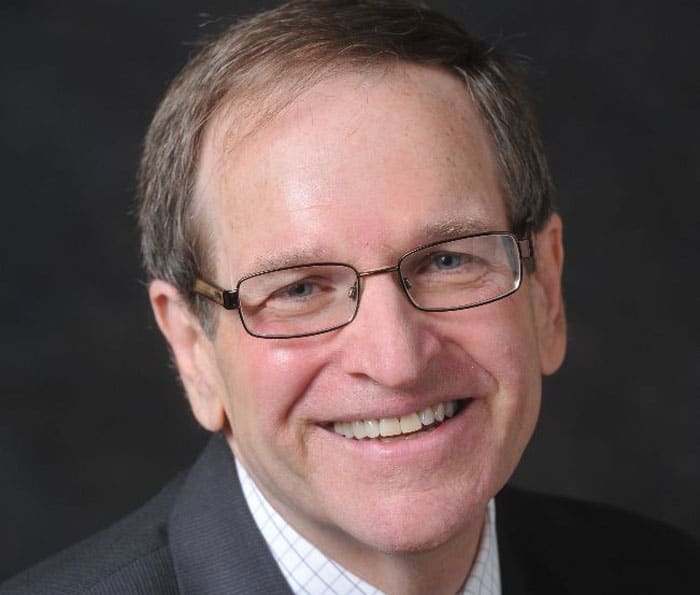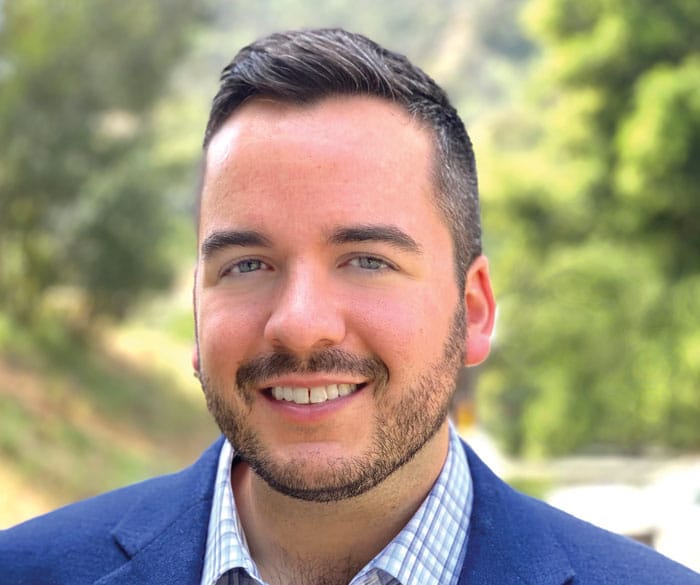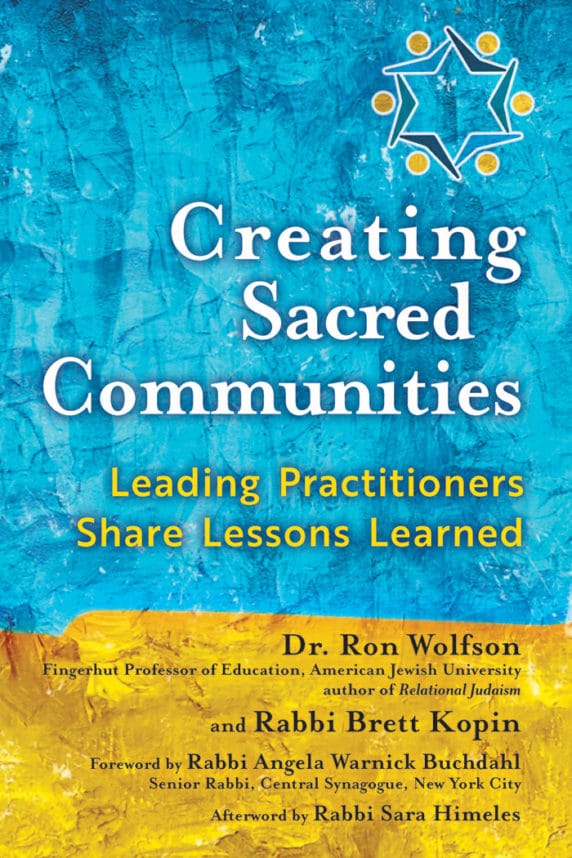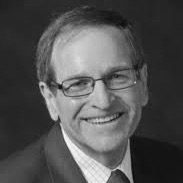
Congregations reeling from pandemic-induced membership decline. Rabbis resigning pulpits in droves. Seminary enrollment plummeting.
These are the headlines proclaiming a crisis in synagogue life. To be sure, these are serious challenges. But, decrying the death of synagogues is going to be the death of synagogues.
These headlines do not tell the whole story. There are congregations that are thriving, growing and serving their sacred communities. How? What are the principles and practices that contribute to this success?

These are the questions we — Dr. Ron Wolfson, professor, and Rabbi Brett Kopin, rabbinical school student at the time—asked 14 rabbis, cantors, executive directors and lay leaders of cutting-edge communities from across North America — and one famous pastor— in the annual “Creating Sacred Communities” seminar for senior students in the Ziegler School of Rabbinical Studies at American Jewish University in Los Angeles in the Spring of 2021. We captured their answers in our new book, “Creating Sacred Communities: Leading Practitioners Share Lessons Learned.”

The collection of presentations is a rare peek into a senior rabbinical school seminar, called by many a “master class” in how to lead a twenty-first-century congregation. Since the sessions were held on Zoom, we recorded and edited the transcripts. Early readers report feeling transported into the classroom, as if these outstanding leaders were speaking directly to them. Here is just a taste of the many insights from these outstanding crafters of sacred community.
“It’s all about relationships.” Three tiers of engagement are central to creating a sacred community: linking people to the totality of Jewish living; building relationships between the clergy, the staff and lay leaders and the members and guests; and connecting members with each other.
Welcoming Ambience
“It’s all about relationships.” Class begins with a deep dive into Relational Judaism, the organizing principle of the seminar. Three tiers of engagement are central to creating a sacred community: linking people to the totality of Jewish living; building relationships between the clergy, the staff and lay leaders and the members and guests; and connecting members with each other. This begins with creating a welcoming ambience in the community, a radical hospitality that infuses every gathering, embracing the lessons learned in Genesis from Abraham and Sarah’s welcoming tent: running to greet guests, under-promising and over-delivering, and ensuring the entire team is committed to building a culture in which every human being is treated as the b’tzelem Elohim, the image of God, that they are.
Welcoming Worship
Rabbi Angela Warnick Buchdahl, the first Asian-American to be ordained as a cantor and a rabbi, now serves as senior rabbi of Central Synagogue in New York City, one of the few synagogues in the world with a membership waiting list and tens of thousands of online participants in prayer services and other programming. She shares how she crafts a welcoming worship experience since beginning her pulpit career as a hazzan:
“Worship has to be an authentic experience for the clergy and the congregation.” – Rabbi Angela Warnick Buchdahl
 The way we think about worship overall is that we have multiple gateways. We’re speaking to the multiple needs and the multiple identities that people are bringing into the space when they come to us. Sometimes you want to hear it in Hebrew and although you might not even understand what it means, it’s reaching something deep. Sometimes we’ll sing something in English because it just hits right when you pray for healing in your native tongue [she’s referring to the well-known “Mi Shebeirach” melody by Debbie Friedman]. We believe in genuine embodied prayer. Among our clergy, we are actually praying on the bimah (pulpit) when we’re up there. It makes me very sad to sometimes hear colleagues say they have to go somewhere else to pray, not in their own synagogue, because they’re not praying. I can’t imagine that there can be an experience for others if there is not even one for those who are praying. Worship has to be an authentic experience for the clergy and the congregation.
The way we think about worship overall is that we have multiple gateways. We’re speaking to the multiple needs and the multiple identities that people are bringing into the space when they come to us. Sometimes you want to hear it in Hebrew and although you might not even understand what it means, it’s reaching something deep. Sometimes we’ll sing something in English because it just hits right when you pray for healing in your native tongue [she’s referring to the well-known “Mi Shebeirach” melody by Debbie Friedman]. We believe in genuine embodied prayer. Among our clergy, we are actually praying on the bimah (pulpit) when we’re up there. It makes me very sad to sometimes hear colleagues say they have to go somewhere else to pray, not in their own synagogue, because they’re not praying. I can’t imagine that there can be an experience for others if there is not even one for those who are praying. Worship has to be an authentic experience for the clergy and the congregation.
As a rabbinical student, Rabbi Josh Warshawsky had already gained a strong reputation as an entrepreneurial spiritual leader and talented songwriter. Today, Josh travels to synagogues all over the country sharing his music, building relationships with diverse communities, and searching for innovative ways to refresh classic prayer experiences:
Every time you approach the prayer book, it’s the same every single time; the words are always the same. They’re right there, they’ve been the same for hundreds of years in the exact same order. We have to find one way that the moment can be novel and can be new and meaningful. Maybe that’s a new melody. Maybe that’s something new that you see in the text. Maybe that’s learning about a different way to understand one of the words. Maybe that’s even just you, coming into this text today as opposed to coming to it yesterday. The way that you approach it, hopefully, will be different today than it was yesterday, but only if we set an intention for that to be the case. For me, that’s what I try to think about whenever I’m crafting worship. How can there be at least one moment in this experience that feels different from the way you’ve done it before?
Welcoming Membership
After Adat Ari El in North Hollywood, California adopted a “sustainable dues” model of revenue generation, Rabbi Jonathan Bernhard invited lapsed members to return to the community and pay the suggested “sustainable” rate, or “a gift from the heart.” Incredibly, eighty families returned to the congregation. Rabbi Bernhard reflects:
We Jews in the liberal community do not prioritize synagogue life enough. For religion to work, it needs to be your one, two, or three. Otherwise, it’s not that you don’t care, it’s just that you care about other things more that take priority and take your time and energy. And while I have been blessed with a lot of congregants for whom it is one, two, or three, the number of people for whom it’s more like seven, eight, nine, or 15 is getting bigger. That’s why the sustainable financial funding model is so important; it lowers the barrier of engagement and raises the possibility that more people will think of their commitment to religious life as one, two, or three.
Rabbi Sharon Brous, founder/senior rabbi and Melissa Balaban, founder/CEO, of IKAR in Los Angeles reveal the “secret sauce” of their success is lowering the bar for entry and raising the bar for engagement.
Rabbi Sharon Brous, founder/senior rabbi and Melissa Balaban, founder/CEO, of IKAR in Los Angeles reveal the “secret sauce” of their success is lowering the bar for entry and raising the bar for engagement. They describe how new members are challenged with expectations beyond dues. Melissa puts it like this: “You can come to IKAR forever for free, but if you’re going to join, we will ask you to make four commitments—a justice commitment, a volunteer community commitment, a learning commitment, and a tzedakah/financial commitment.”
This Jewish Emergent Network sacred community created 18 years ago with seven people in a living room now counts 1,100 households, gaining 200 “IKAR from AFAR” members during the pandemic. Rabbi Brous adds:
We’re trying to make it so that everybody can feel at home here. But at the same time, we need it to be challenging and meaningful and demanding in ways that I think a lot of Jewish places shy away from. We’re asking: what would it mean if we actually ask something of people? What if we said: “To be in this space, there’s something that we’re hoping you’ll give us.” We’re doing these new member house parties with people from Chile and Japan and London and San Diego, and I’m saying, “You could have gotten IKAR for free!” But what they want is not just access to services … they want to be part of something that feels purpose-driven, a place that feels like their voice matters, like they are connected to other people standing on the same side of history.
Connecting People with Each Other
“Purpose-driven” is the watchword of Pastor Rick Warren, the founder of Southern California’s Saddleback Church, one of the world’s most successful megachurches, attracting 30,000 attendees every week in twenty locations across the globe. In the book, Pastor Rick tells the rabbis to “say something in shul [he used that word] on Shabbat that they can use in their real lives on Monday.” Pastor Rick structures the church around six levels of deepening spiritual commitment and engagement, explained as six concentric circles, where one moves from the outer circle (the least committed) to the smallest inner circle representing the deepest level of commitment. He teaches that the secret to growing larger is by being smaller, engaging people in small groups meeting in their homes, 7,000 of which serve their sacred community. “These small groups are the heartbeat of our congregation and they are spread out across Southern California — from Malibu to San Diego.”
Rabbi Lydia Medwin at The Temple in Atlanta and Rabbi Nicole Auerbach at Central Synagogue in New York City took Saddleback’s small group model and adapted it for synagogue life in their book, “The Relational Judaism Handbook,” co-authored with Dr. Ron Wolfson. Rabbi Lydia explains: “Small groups are the most basic form of community. At The Temple, we wanted to create a culture where small groups were the natural outcome of any good idea, because that’s where people are seen and heard best and loved best. Our friends at Saddleback Church always ask, ‘Are you a community with small groups … or a community of small groups?’”
The director of media relations for Chabad-Lubavitch International, Rabbi Motti Seligson, answers questions about Chabad’s success in building sacred communities throughout the world, led by shluchim (emissaries) and their families. When asked why the Rebbe sent rabbis to a community for life, he tells our young rabbis: “A shlichut is a mission … it’s not about you. It’s about the people you’re serving and the community you’re serving, and you become part of the community. It becomes your family, and you don’t move from family to family.”
The Relational Rabbi
Rabbi Ed Feinstein of Valley Beth Shalom in Los Angeles shocked our seminar:
People are going to tell you that being a great rabbi is about speaking well. It is not. The greater skill of the rabbi is how you listen. People who are able to really listen are people who make great rabbis. Listening gives you a clue about the deeper meaning of the moment and what needs to be said. The Seder asks us to think of ourselves as a community of ex-slaves. If you thought that way, how would you walk the world differently? What would you see that you couldn’t see otherwise? How would you respond to the world? Every ancient culture thought slaves were the lowest forms of life. If you were a child of a slave, you were nothing. And we walk around going, “I’m proud of this.” Why? What does it do for us? That’s the question. What does it do for me? This is the question we have to be answering all the time. The wicked child at the Seder asks, “What does this mean to you?” His question goes right to the heart: Why does the Passover story matter? Why is this Seder ritual so important to you?
“People are going to tell you that being a great rabbi is about speaking well. It is not. The greater skill of the rabbi is how you listen.“
– Rabbi Ed Feinstein
When Rabbi Dan Moskovitz came to the pulpit at Temple Sholom in Vancouver, Canada, he read 30-40 names on the yahrzeit memorial list every Friday night. New in town, he knew none of these people. So, he carved out several hours in his week to call the family members remembering their loved one. “Hi, this is Rabbi Dan. I see it’s your mother’s yahrzeit coming up. Please tell me a story about her.” He reports that to this day, he is still pulling social capital from those conversations. In seven years, this relational rabbi has grown the congregation by 40%.
Clergy/Lay Leadership
Norman Levine, past-president of Valley Beth Shalom, counsels the rabbinic students about the relationship between lay leadership and the clergy, beginning with the role of synagogue president:
My job is not to be a rabbi; my job is to support the rabbis by providing the resources to do their jobs. I am there to “take a bullet” for the rabbis, to have their back. And, no one in the shul wants to talk to Norm Levine; but everyone wants to talk to the synagogue president. So, I stand at the entry of the sanctuary greeting everyone and I invite people to schmooze with me at the Kiddush lunch.”
Janice Kaminer-Reznik, a dynamic lay leader, tells the story of her partnership with Rabbi Harold Schulweis, of blessed memory, in creating the social justice initiative, Jewish World Watch:
Rabbi Schulweis was a moral visionary. He was not afraid to speak his mind or to admonish people to wake up to their responsibility. He called me one day and told me, “I’m going to be bringing something up at the High Holy Days, and I want you to be listening really closely because I want you to take the ball and run with it.” I asked him what he would be proposing. He told me, “It relates to a place called Darfur.” I had never heard of Darfur; this was in 2004, toward the beginning of the Darfur genocide. And I responded, “Well, I’m listening, I’m listening.” And I did. Especially compelling to me was when he talked about our silence in the face of atrocity … I recognize the power that Rabbi Schulweis lent to this cause. He was really healthy for the first seven or eight years of Jewish World Watch and extremely engaged with us. He didn’t have to plan anything; all he had to do was say “yes” … and he always said “yes.”
Engaging the Next Generation
Rabbi Mike Uram, former head of University of Pennsylvania Hillel and the current Chief Vision and Education Officer for Pardes North America, describes how to begin thinking about engaging young professionals:
The first thing to say about creating sacred communities is that we have to end this notion of “the Jewish community.” I hear this all the time from people in the organized Jewish world. This language is actually really dangerous. The truth is that there is not really one Jewish community. That language creates a false binary choice: You’re either in the community or outside the community. The trends are shifting from macro to micro, from ‘one size fits all’ to “customization.” I was really proud of the mission statement of Penn Hillel: “Create the relationships, the experiences and the communities for college students” — not programs, but experiences, and not community but communities. We created an autonomous, separately branded engagement effort to reach hundreds of Jewish students who would never consider coming to the Hillel building. Some synagogues are doing this.
A Culture of Meaning
Dr. Bruce Powell, expert consultant to Jewish day schools throughout North America and co-author of “Raising A+ Human Beings” reveals how schools can raise their students to be A+ human beings:
My mentor, a man by the name of Shlomo Bardin, was speaking to the faculty club at Columbia University in 1930 and said, “American education is too much about measuring and not enough about meaning.” This became the guiding piece of my educational philosophy as I grew up, and it also became the underpinnings of this notion of creating a culture in a place, whether it’s a synagogue or a camp, a company or a school — it doesn’t matter. All the principles are the same: We have to be more about meaning than we are about measuring. I tell my incoming students: “You can be an A+ human being, even if you’re not an A student in every subject.” The notion that every human being is created b’tzelem Elohim (image of God) now is for real. What is your gift? Our job as educators, your job as rabbis, in running a culture is to help each person find his or her gift.
Rabbi Sara Himeles, a fellow classmate, writes in her Afterword to our book:
In his brilliant remarks to our class, Rabbi Ed Feinstein underscored that teshuvah is a critical component of any sacred community. As rabbis, Jewish educators, and leaders, we can model this and set the tone for our communities and classrooms by openly sharing the ways we forgive ourselves and others. We can publicize and celebrate acts of compassion and kindness, an important way to encourage and guide our sacred communities.
It is time to return to the fundamental building blocks of sacred community.
It is time to stop the hand-wringing and renew the work of creating compelling and engaging sacred communities offering a path to meaning, purpose, belonging and blessing. It is time to return to the fundamental building blocks of sacred community. Let’s put people first before programs. People will come to synagogues for programs, but they will stay for relationships. For congregational leaders, the lessons we learned in “Creating Sacred Communities” chart an exciting and positive way forward.
Dr. Ron Wolfson is the Fingerhut Professor of Education at American Jewish University, President of the Kripke Institute, and co-author of “The Relational Judaism Handbook.” “Creating Sacred Communities: Leading Practitioners Share Lessons Learned” is available at http://creatingsacredcommunities.com/
Rabbi Brett Kopin received rabbinic ordination from the Ziegler School of Rabbinic Studies in 2021. He is the co-screenwriter of the award-winning animated film “The Tattooed Torah” (https://www.thetattooedtorah.com). He currently serves as a Jewish Educator at Milken Community School in Los Angeles.























 More news and opinions than at a Shabbat dinner, right in your inbox.
More news and opinions than at a Shabbat dinner, right in your inbox.